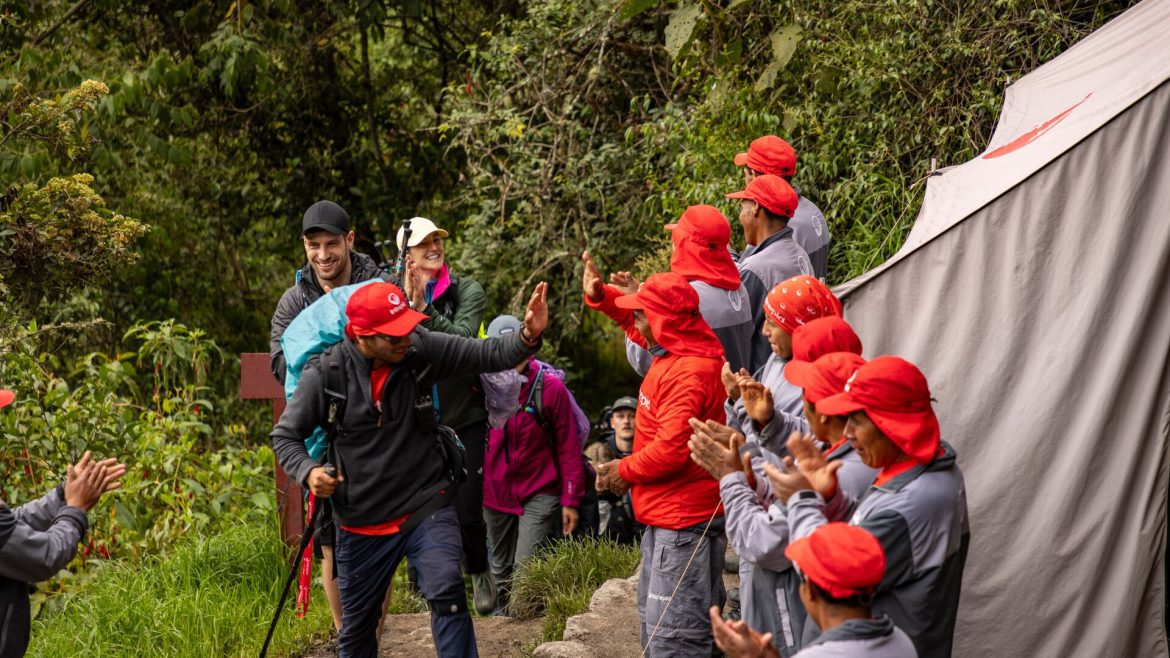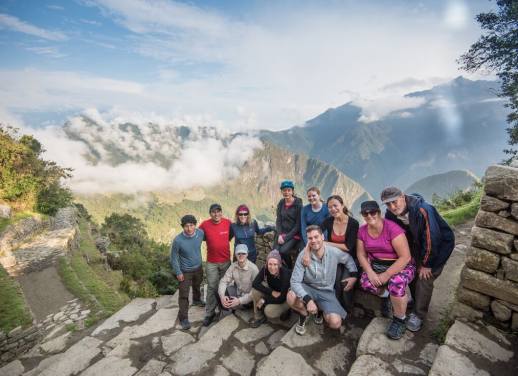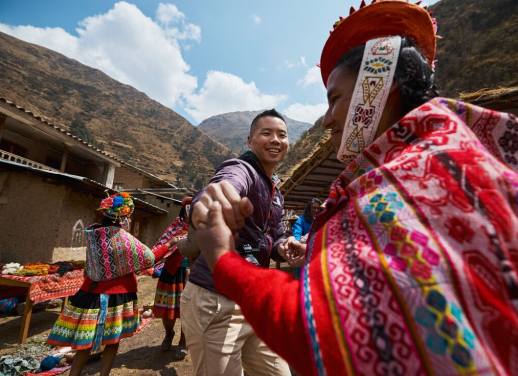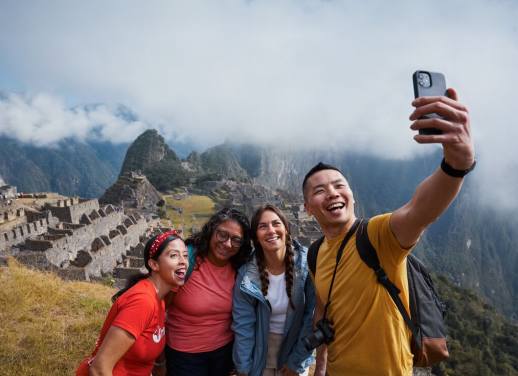For 11 months of the year, about 160,000 people – including travellers, tour guides, cooks and porters – hike the ancient roads and trails that traverse the Andes and lead to Machu Picchu, the Inca Empire’s sacred city. As the third largest operator on the trail, Intrepid is well aware of the responsibility they carry to keep those trails in good shape. So when crews started to notice the single-use plastic waste piling up, they felt compelled to do something about it.
It was October, and Paul Garrido, a seasoned Intrepid leader from Cusco, was leading a group across one of the most famous hiking trails in the world, the Inca Trail. He’s used to answering travellers’ questions, but one question on that trip made him reflect deeper: ‘Where do all the ponchos end up?’ enquired a woman from Melbourne. Though it was dry season on the Inca Trail, most travellers had bought a plastic poncho for $1 USD in case the weather turned.
Considering the hundreds of travellers Paul had guided along these trails over the years – most of whom had one of these single-use, rarely repurposed nor recycled ponchos stashed in their daypack – it was a fair question: Where does all that single-use plastic go, and what can we do about it?
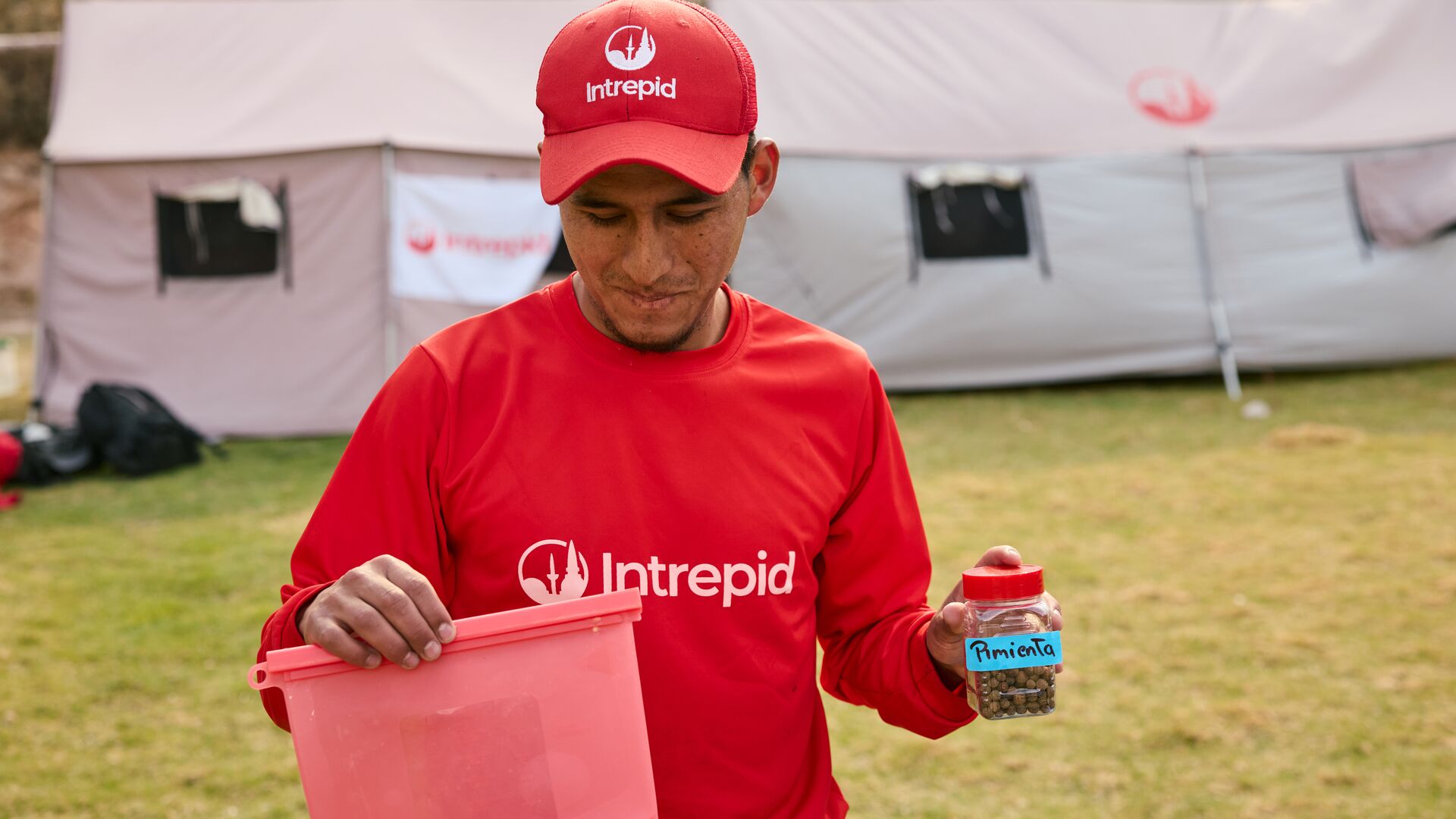
A changing mindset
‘On the Inca Trail, things are done one way because that’s how it has always been,’ says Fernando Rodríguez, general manager for Intrepid in Peru. ‘It was a given among trail operators that hikers would buy the single-use plastic poncho, regardless of the weather conditions, because there wasn’t another choice. It was a wake-up call for us to figure out what else we could do to lessen the environmental impact of our experiences. It was there that we realised there was much more to do.’
It wasn’t the first time the team had considered its impact on the trail. As the third largest official operator of the Inca Trail – of about 260 agencies with official operator permits that run trips at least once a year – Intrepid began its efforts to make small but impactful changes to reduce single-use plastic (SUP) in 2021 by partnering with the Peruvian Environment Minister overseeing tourism operations on the trail.
‘At that point, we were part of the official pilot program to do a one-day Inca Trail experience 100 per cent SUP free. There was no need to set up camp, and it only required providing one meal, so we integrated containers made from sugarcane fibre, replaced SUP water bottles with reusable cups and offered fruits that provide hydration,’ explains Fernando.
Over time, they started to think: if they could take this approach to one-day trips, could they apply it to multi-day camping treks? On a three-day trek, for example, crews pack and carry the group’s camping and cooking equipment, all food and drinks plus any waste accumulated throughout the trip. If that includes food packaging for up to 16 travellers and 26 crew plus single-use water bottles and ponchos, that waste can accumulate quickly.
‘Operators are required by the Peruvian authorities to separate their garbage – organic, inorganic and human waste – and remove it from the Inca Trail,’ says Fernando. ‘However, once the garbage is out, it‘s usually placed in a dumpster and taken out on the train, but we have no way of knowing what happens after that.’
Today, Intrepid has reduced its use of SUP by 90 per cent. When you consider Intrepid takes over 2000 people onto the Inca Trail in a year, those reductions make a big difference.

Enter two SUPerheroes of the Inca Trail
None of this would be possible without the long-standing efforts of Maritza Chacacanta, a native Quechua woman and operations manager with at least 500 Inca Trail hikes under her belt, and Robert Franco, a second-generation Quechua porter who’s now Intrepid’s trek supervisor overseeing SUP reduction efforts.
With their deep connection to the Inca Trail and generational knowledge of the dynamics and logistics of supporting these treks, Maritza and Robert are two of the Intrepid masterminds behind new and novel solutions for SUP reduction. A big piece of that has been swapping out SUP bags and packaging for reusable containers – think silicone, paper, cardboard or cloth – to transport food and water. It’s not always as easy as it might sound when you consider the logistics of catering to a group and buying in bulk.
‘For example, the plastic wrap of most commercially available snacks in Peru has a shiny reflective layer, making it unfit for recycling,’ Fernando says. ‘So we partnered with a small local company from Cusco that already had a sustainable and low-environmental impact vision to provide organic snacks with recyclable wraps.’
One of the final pieces of the food storage puzzle was procuring the perfect reusable container to carry spaghetti. The crew needed something strong enough and long enough to protect the fragile noodles, and it wasn’t like choosing a less oblong noodle that would fit a wider variety of container shapes would do – spaghetti really is the most packable and portable noodle when you’ve got a lot of mouths to feed on a multi-day hike.
Trek cooks also collect used cooking oil and donate it to the municipality to turn into soap, while also collecting bottle lids and donating them to non-profits so they can raise funds.
‘We’re committed to donating our trips’ organic waste to local communities and farms on the Quarry Trail for animal feed,’ Fernando adds. ‘Intrepid also has an alliance with Ollantaytambo’s municipality to dispose of inorganic waste.’
Plus, gone are the single-use disposable ponchos and now all trekkers can borrow a reusable poncho for their trip.
Bottle by bottle, brick by brick
A sense of curiosity and a steadfast resolution to do more drove Robert on a journey to figure out what to do with all the SUPs unfit for recycling. ‘One day, Robert called Maritza about a video he saw on YouTube about repurposing single-use plastic to create bricks and build walls with help from extra wiring and structural bars,’ explains Fernando.
With a learning curve and adamant waste separation supervision, Robert and Maritza have applied their newfound knowledge to building needed walls and fences for Intrepid’s trekking warehouse on the outskirts of Ollantaytambo using homemade SUP bricks.
Their goal is to make tables and chairs to improve the lounging facilities for porters at the warehouse and donate some to local schools. They think if Quechua communities start seeing the possibilities with the SUP bricks, they could apply them at home.
‘Our crews have gone a step further by also picking up the discarded SUP we come across along the trail to bring back to our warehouse and then turn it into bricks,’ adds Fernando.
Read more: Meet Maritza, the Intrepid manager cleaning up Peru
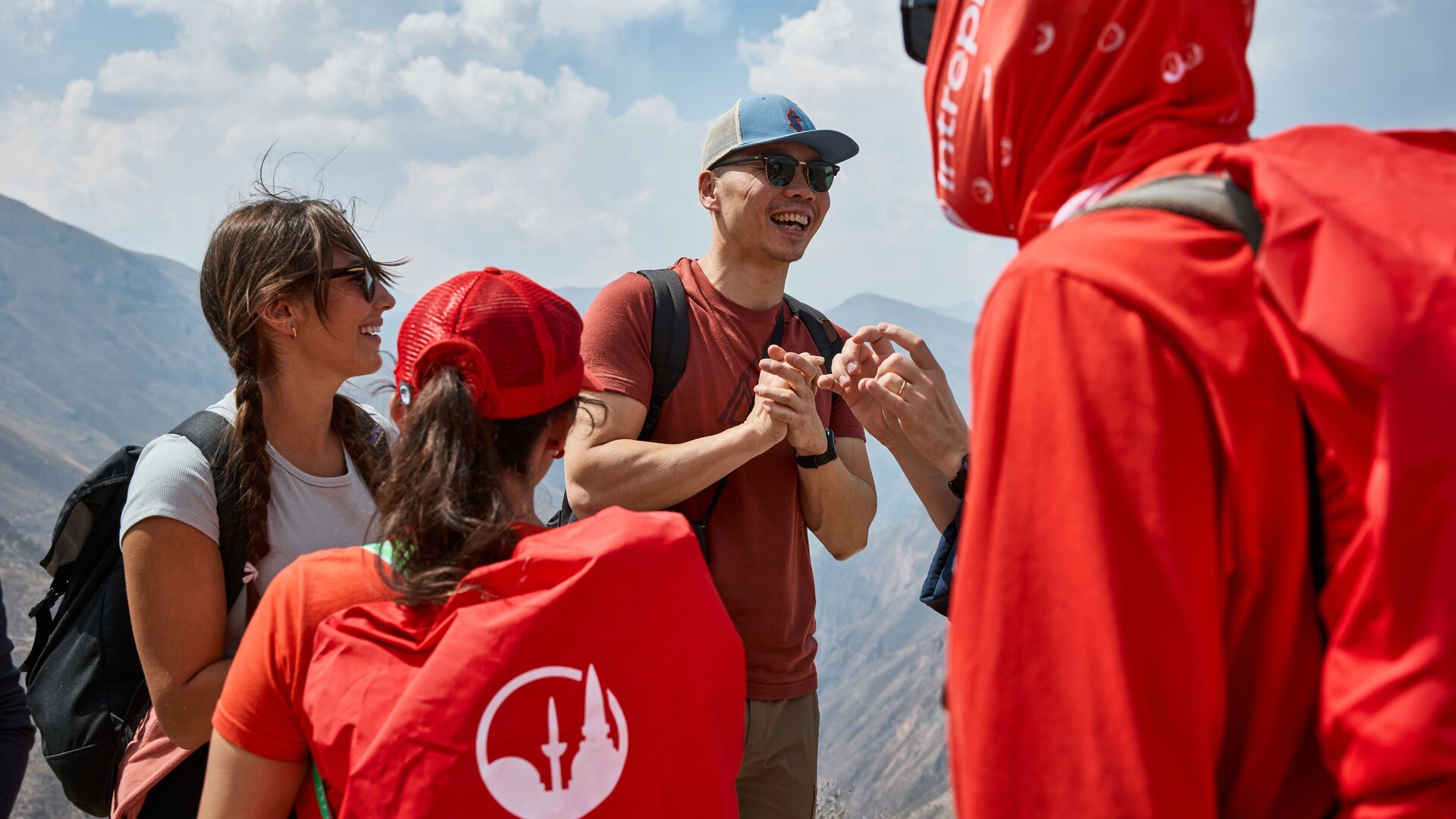
A contagious awakening for a purpose
Fernando sees Intrepid’s efforts as an opportunity for all Inca Trail operators. As the third largest player in the region’s travel industry, Fernando and his team want to lead by example.
‘Regardless of the volume of visitors each operator welcomes in a year, we all face the same challenges,’ Fernando explains. The ultimate goal is to prove that small but meaningful changes have a significant impact and, more importantly, to open opportunities for partnerships and alliances with local authorities and the private sector. ‘If Intrepid shows that it can be done, then fellow Inca Trail operators can do the same,’ he emphasises.
For more than 500 years, the Quechuas have walked the Inca Trail with a deep respect for the land and Pachamama, or Mother Earth. Back in the day, there were neither SUP ponchos nor snack wraps. Today, travellers from all over the world can trek the same path as the Incas; however, the privilege comes with responsibilities.
‘There is an overwhelming feeling when you arrive in Machu Picchu after hiking the Inca Trail for three days,’ reflects Fernando. ‘Every effort – whether physical or emotional – is worth it once you arrive at the Sacred City. The beauty of the landscape and the people you share the experience with. Intrepid wants a more sustainable behind-the-scenes to this experience and to raise the bar among trail operators for the common good.’
How to make a brick out of single-use plastic
- Find a larger (one- to two-litre) bottle with a lid. This will be your brick.
- Collect, wash and dry soft single-use plastic waste like food packaging.
- Squish pieces of your soft plastic waste into the bottle. Use a stick to press it down. You might need to cut or rip your plastic into smaller pieces.
- Keep squishing and squashing! The goal is to get the plastic inside the bottle as tightly packed as possible – so tight you can stand on the bottle without denting it.
- When it’s fully packed, screw the lid back on the bottle. Marvel at your new brick!
Looking for a low-impact adventure? Leave the plastic poncho behind and trek to Machu Picchu with Intrepid.

